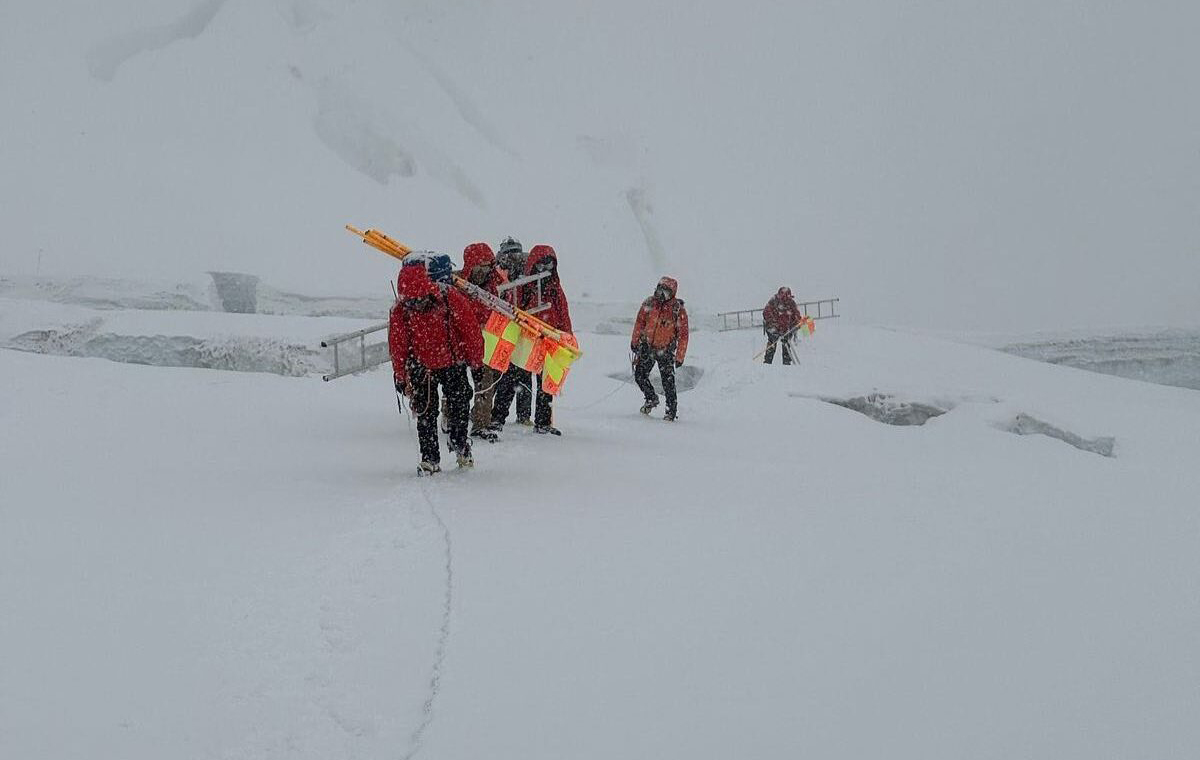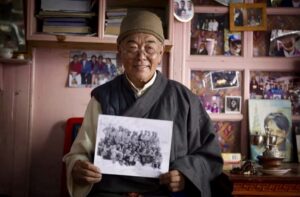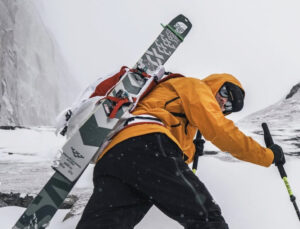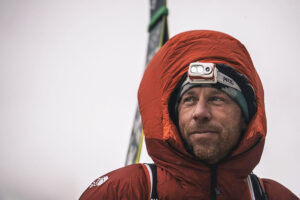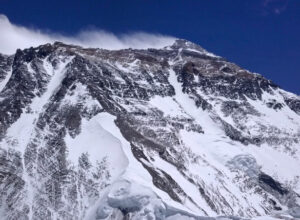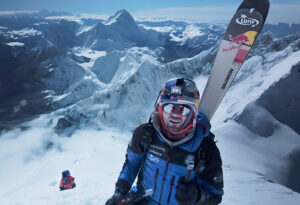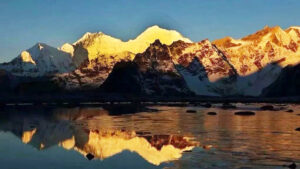It took a final 18 hours of non-stop work in tough conditions, but the expert Sherpa team known as the Icefall Doctors have completed the difficult, winding route through Everest’s Khumbu Icefall.
Bad weather and icy conditions made the job especially difficult this year. The Icefall Doctors, managed by the Sagarmatha Pollution Control Committee (SPCC), had to thread a passage near the Nuptse Face, further east than usual.
The Icefall Doctors at work. Photo: SPCC
Yesterday, the team reached the top of the Icefall despite the thick fog. In 18 hours, they laid 2,200m of rope.
Here is a video of their arrival at the top.
Avalanche yesterday
The Khumbu Icefall is the most dangerous section of any route on Everest. The Khumbu Glacier breaks into a maze of seracs and crevasses, and its constant movement causes giant chunks of ice to collapse unexpectedly.
The SPCC reported an avalanche yesterday, but it didn’t affect the route or pose a danger to the workers. The avalanche happened on the opposite side of the glacier, near Lingtren Peak.
Icefall Doctors carry ladders to fix the route to Camp 1 on Everest, with Pumori in the background. Photo: SPCC
Summit rush
Now, the many climbing Sherpas waiting at Base Camp can start fixing and supplying camps along the mountain. Camp 2 is particularly important. Located at 6,400m on a flattish part of the glacier known as the Western Cwm, climbers spend a significant amount of time there. They stop there both on their first rotation up the mountain and before their final summit push. Meanwhile, a group of Sherpa workers will focus on laying ropes to the summit.
Hundreds of Everest climbers are flocking to Base Camp now, with many already trekking up the Khumbu Valley. It is too soon to know the final number of visitors to Everest in 2025, but local companies expect numbers to be similar or even slightly higher than in 2024.
Dawa Steven Sherpa of Asian Trekking told ExplorersWeb that preliminary estimates are between 400 and 500 climbers. He noted a noticeable increase in Indian teams this year. In particular, 47 climbers are on three Indian Army expeditions.
Yesterday, Nepal’s Department of Tourism listed 134 permits for foreigner climbers. Many more will be added in the weeks ahead.
The Sagarmatha Pollution Control Committee has a checkpoint in Everest Base Camp to coordinate work on the Icefall and to check compliance with environmental rules. Photo: SPCC
Icefall fee
The SPCC, a non-profit institution in the Khumbu Valley, has also released details about the fee climbers pay to use the route through the Icefall. The price for the service has held steady at $600 since authorities first established it in 2016.
Working to open the route to Camp 1 on Everest. Photo: SPCC
Remember the rules
The SPCC is taking environmental measures seriously. They will check compliance with the rules implemented last year, such as the mandate that each climber must bring back at least eight kilos of garbage from above Base Camp and to use poop bags. There are also some new rules, mainly addressed to expedition operators:
- Segregation of non-organic waste is mandatory in Base Camp and all higher camps. There have to be separate bags for plastic, paper, tin cans, and glass bottles.
- At Camp 2, it is forbidden to install toilet tents on crevasses, a common trick to get rid of human waste. As stated in 2024, teams must bring all human waste down the mountain.
- Expedition outfitters are not allowed to store material at Camp 2 after their expeditions. Camp must be clean and empty by the time the monsoon arrives.
